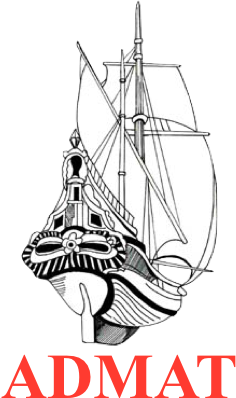
A French salt glazed stoneware bottle with broken top

Side profile

A broken French faienceware plate with a blue and white flower design, after the soot had been cleaned off it. Due to the soot covering being all over the place we can tell this was broken at the time of wrecking and prior to the fire

The rear side of the plate piece

Some of the Team discussing artefacts

The small pieces of rope prior to being packed and send off to Dr Francois Gendron for analysis in France with the permission of ONPCS

Close up of the rope strands, which probably date back to pre 1720

A concreted pair of primed and armed grenades

A concreted pair of primed and armed grenades

A concreted primed and armed grenade with ballast chips and shells concreted to it

A concreted grenade, primed and armed

One of the grenades with the concretion removed showing the wooden fuse

Some of the 36 armed and primed grenades, in fresh water conservation at The Centre

A lead patch showing the nail holes. Half of the lead patch was in the fire which resulted in the lead melting and forming droplets which you can see on the left side

One of the cargo of terrocotta floor tiles

Another floor tile

Yet another floor tile, this time with an iron concretion which has also stuck a base to a French faienceware beaker and some ballast chips and shells

A close up

A concreted iron bolt

An important find, this is the second French faienceware bowl, albeit broken like the other. This one was broken at the time of wrecking and is covered with soot. The bowl was white with green stripes and a central flower design in yellow, blue and green. These designs were produced by the Never Foundry in the Loire Valley and only from between 1720 and 1723. the original diagnostic artefact helped us date the wreck

The underside and showing the remaining intact handle

Top view showing the remains of the pattern

A musket ball

A small ballast stone

A lead cylinder used for melting and pouring into a musket ball mould

The base of a French faienceware beaker which is covered with soot from the fire

Park of a timber shiv or pulley wheel block

A concreted nail with coral growth at both ends (one detached but found on site)

A iron keel bolt ghost concretion. The iron has leached out forming the concretion and eventually there was no iron remaining forming a ghost of what was there orriginally

An unknown concretion






























